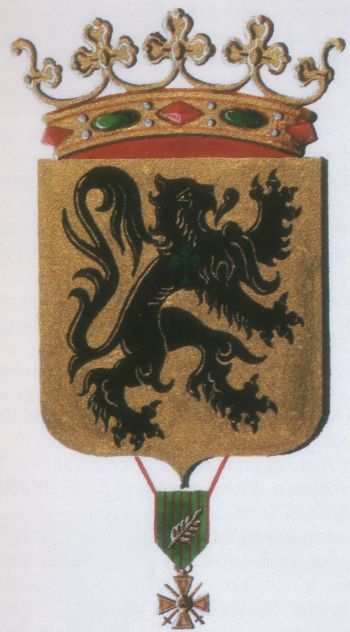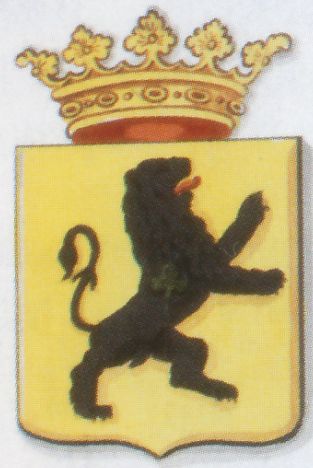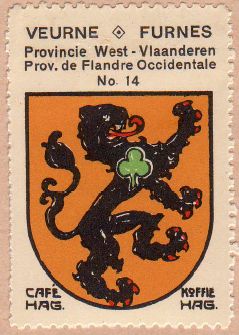Veurne
| Heraldry of the World Civic heraldry of Belgium - Belgische Gemeentewapens / Armorial de Belgique |
VEURNE
Province : West-Vlaanderen
Additions : 1970 Avekapelle, Zoutenaaie; 1976 Beauvoorde (1970 Vinkem, Wulveringem), Booitshoeke, Bultskamp, Eggewaartskapelle, Houtem (1970 De Moeren), Steenkerke
Origin/meaning
The arms were officially granted on December 10, 1986.
Veurne became a city at the end of the 12th century and was the centre of a large region (Kasselrij) in Vlaanderen. In 1586 the city and the kasselrij were joined under one council. The seals of Veurne showed in the 13th century a plant or flower and on the contra-seals a lion, probably the lion of Vlaanderen. Later contra-seals also showed the plant.
The seal of 1409 showed again a lion. After the merger in 1586 a new seal was used showing arms with on the first half the lion of Veurne and on the second a lion and a saltire, for the kasselrij.
In the middle of the 16th century two versions of the arms were known; a black lion, armed red, on silver, or, as mentioned by Gaillard in 1538, a black lion on gold, with a small trefoil on its chest. Ever since the arms showed a black lion, with or without trefoil.
In 1818 the city received the black lion and trefoil, but now with a red tongue. This was confirmed after the Belgian independance. In 1986 the red tongue was removed and the French War Medal, which the city received in 1919, was added.
| The arms from 1818 and 1838 |
The arms in the Koffie Hag/Café Hag albums +/- 1930 |
Literature : Servais, 1955



